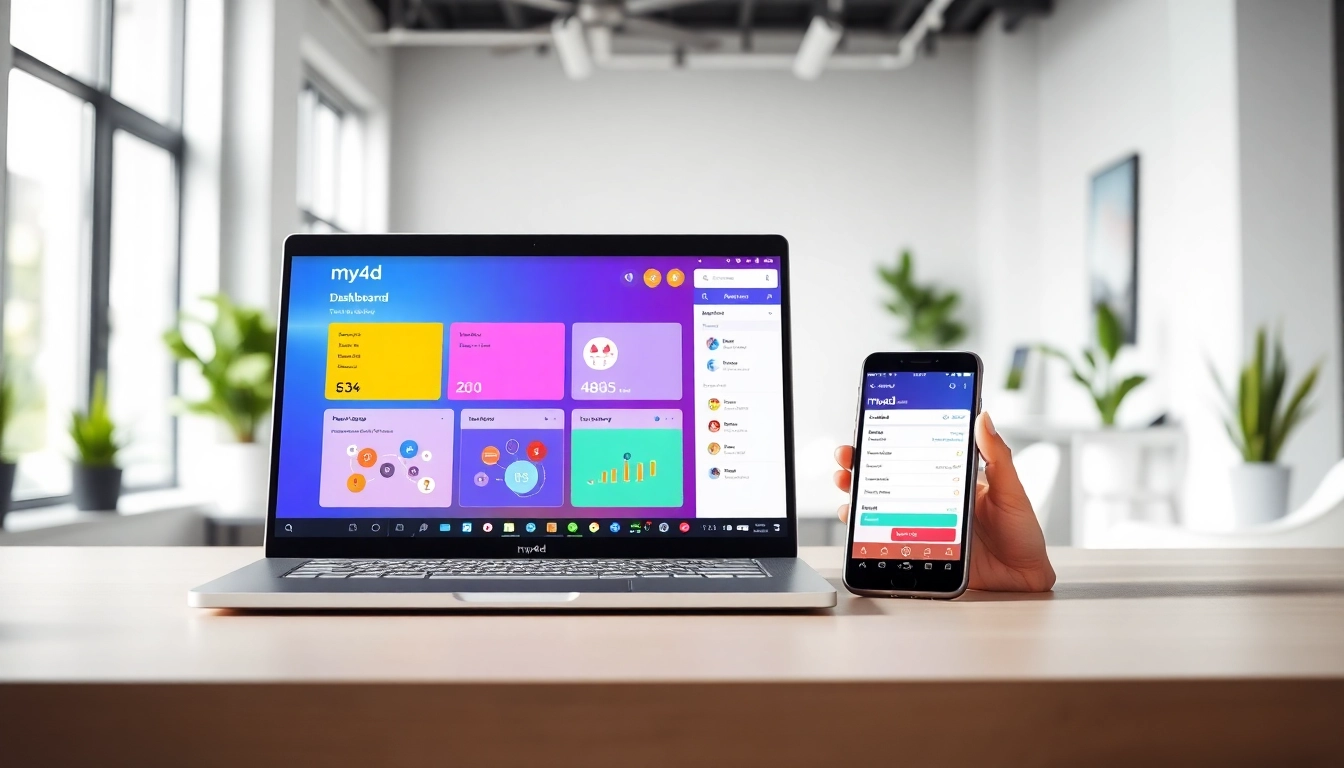
Understanding Email Automation Tools
What is an Email Automation Tool?
Email automation tools are software solutions designed to streamline and automate the process of sending emails to customers and leads. These tools enable businesses to communicate efficiently, delivering tailored messages to specific segments of their audience without requiring extensive manual effort. From managing mailing lists to scheduling emails at optimal times, an email automation tool can deliver significant efficiency and engagement improvements in email marketing strategies. By leveraging automation, companies can nurture leads, promote products, and stay in touch with customers, enhancing their overall marketing efforts.
Benefits of Using Email Automation
Utilizing email automation tools comes with a plethora of advantages for businesses of all sizes. Here are some notable benefits:
- Time Efficiency: Automating repetitive tasks such as sending welcome emails or follow-ups frees up valuable time for marketing teams to focus on strategy and creativity.
- Consistency: Automated emails ensure that communications are sent consistently, maintaining brand presence in the inbox of your recipients.
- Personalization: Many email automation tools allow for customization of content based on user behavior and preferences, which can significantly increase engagement rates.
- Analytics and Insights: The right tools provide analytics that help in understanding customer interactions and can guide campaign adjustments for better performance.
- Improved ROI: By enhancing efficiency and providing better-targeted communication, these tools can lead to a higher return on investment for marketing campaigns.
Key Features to Look For
When selecting an email automation tool, consider the following key features:
- User-friendly Interface: An intuitive dashboard makes it easier for teams to create and manage campaigns without a steep learning curve.
- List Segmentation: The capability to segment your audience based on various criteria (like demographics or behavior) can enhance targeting.
- Integration Capabilities: Look for tools that integrate seamlessly with your existing systems—like CRM, e-commerce platforms, and social media.
- Customization Options: Ability to tailor templates and email content to match your brand’s voice and style.
- Analytics and Reporting Tools: Comprehensive analytics to track open rates, click-through rates, and conversions are critical for measuring campaign success.
Choosing the Right Email Automation Tool
Comparing Features Across Tools
Choosing the right email automation tool requires careful evaluation of various features and functionalities across available options. It’s important to compare:
- Email Templates: Check the variety and quality of email templates available.
- Automation Workflows: Evaluate how easy it is to set up automated workflows based on triggers such as user sign-ups or purchases.
- Support and Training: Assess the level of customer support offered and the availability of resources to help you get the most out of the tool.
By conducting a detailed comparison, you can pinpoint the tool that most closely aligns with your specific needs, preferences, and overall marketing strategy.
Considering Integration with Other Services
Another vital aspect when choosing an email automation tool is its ability to integrate with other software and services. Efficient marketing relies on the synergy of various platforms, including:
- CRM Systems: Integrating with CRM helps maintain customer data integrity while enabling better targeting.
- E-commerce Platforms: Synchronization with your e-commerce system can streamline promotional efforts by automatically sending targeted emails based on purchase behavior.
- Social Media: Connect your email campaigns to social media platforms to enhance reach and engagement.
Integration capability ensures that data flows smoothly across your marketing ecosystems, leading to more efficient campaign management and insightful data analysis.
Pricing Models and Budgeting for Automation
Pricing can vary significantly among different email automation tools, depending on the features offered and the scale of your operations. It’s important to evaluate:
- Pricing Tiers: Many tools offer tiered pricing based on the number of subscribers or emails sent, so consider your growth potential.
- Additional Costs: Some providers might charge extra for premium features like advanced analytics or dedicated support.
- Free Trials: Take advantage of free trials to assess the tool’s functionality before making a financial commitment.
Allocate a budget that not only covers the base costs but also any potential expansion as your email marketing campaigns grow.
Implementing Your Email Automation Tool
Step-by-Step Setup Guide
Once you’ve selected an email automation tool, the next step is to set it up effectively. Here’s a step-by-step guide:
- Create an Account: Sign up for an account and follow the activation instructions provided.
- Import Contacts: Bring in your existing email lists. Ensure the data is accurate and up-to-date.
- Segment Your Audience: Organize your contacts into segments based on their behaviors, demographics, or interests.
- Design Your Emails: Utilize templates and design your first email campaigns, keeping brand consistency in mind.
- Set Automation Triggers: Define triggers for automated emails, such as welcome emails for new subscribers.
- Set Up Testing: Before going live, conduct tests to ensure everything functions as intended.
- Launch Campaigns: Begin sending your campaigns and monitor responses closely.
Following these steps can help ensure a smooth implementation of your email automation strategy.
Creating Effective Email Campaigns
Creating effective email campaigns requires strategic planning and creativity. Here are some best practices:
- Craft Compelling Subject Lines: Your subject line is the first impression recipients have of your email and can determine open rates. Aim for clarity and intrigue.
- Personalize Content: Use the data you have on your audience to create personalized messages that speak directly to their needs or interests.
- Call to Action: Each email should include a clear and impactful call to action that guides recipients on what to do next.
- A/B Testing: Regularly test different subject lines, content types, and layouts to see which resonate best with your audience.
Incorporating these methods will help improve the performance of your email campaigns, leading to increased engagement and conversions.
Testing and Optimizing Your Campaigns
To ensure that your email campaigns are effective, regular testing and optimization are essential. Here’s how to do this:
- Analyze Performance Metrics: Use the analytics features of your email automation tool to monitor key metrics such as open rates, click-through rates, and conversion rates.
- Iterate Based on Feedback: Take note of what works and what doesn’t. Adjust your strategies, content, and audience segmentation based on actual performance.
- Solicit Subscriber Feedback: Consider sending surveys to your audience to gather insights directly from them about the content they enjoy or would like to receive.
This ongoing process of testing and optimization can lead to continual improvements in your email marketing effectiveness.
Measuring Success with Email Automation
Key Metrics to Monitor
To measure the success of your email automation efforts, it’s crucial to focus on the following key metrics:
- Open Rate: This indicates how many recipients opened your email and is essential for gauging the effectiveness of your subject lines.
- Click-Through Rate (CTR): This measures how many people clicked on links within your email, indicating engagement levels.
- Conversion Rate: A crucial metric that tracks how many recipients took the desired action after clicking through, such as making a purchase.
- Unsubscribe Rate: Monitoring how many people opt out of your emails can provide insights into the relevance and quality of your content.
- List Growth Rate: Tracking how quickly your email list is growing can reveal the effectiveness of your lead generation efforts.
By focusing on these metrics, businesses can gain a comprehensive view of their email campaigns’ performance and identify areas for improvement.
Analyzing Customer Engagement
Understanding customer engagement is paramount for refining email strategies. Here’s how to analyze it:
- Segment Analysis: Review how different segments engage with your emails. This can inform whether your segmentation strategy is effective.
- Behavior Tracking: Identify which content types receive the most interaction and adjust your campaigns accordingly.
- Feedback Collection: Actively seek feedback through post-email surveys or user interactions to gauge recipient satisfaction.
Using these approaches to analyze customer engagement can yield valuable insights to enhance future campaigns.
Adjusting Strategies Based on Data
Data-driven decision-making is an essential component of successful email automation. Here’s how to adjust strategies effectively:
- Identify Trends: Look for patterns in data to identify which messages perform best in terms of engagement and conversions.
- Tailor Future Campaigns: Use insights from previous campaigns to tweak the content, subject lines, and sending times of future emails.
- Respond to Changes in Audience Behavior: Stay flexible and adjust your strategies based on shifts in your audience’s preferences or behavior.
This continuous improvement process, guided by data, helps create more impactful and results-driven email campaigns.
Advanced Strategies for Email Automation
Segmentation for Targeted Messaging
Segmentation is one of the most potent techniques to enhance the effectiveness of email marketing. By dividing your email list into smaller groups based on specific criteria, you can create targeted messaging that resonates more effectively with each group. Some common segmentation strategies include:
- Demographic Segmentation: This includes factors like age, gender, location, and other demographic details to tailor messages.
- Behavioral Segmentation: Segment users based on their interactions with your previous emails or website behavior, focusing on engaged vs. non-engaged users.
- Lifecycle Stage: Define segments based on the customer journey stage—new subscribers, engaged customers, or re-engagement targets.
Implementing segmentation allows for more personalized content delivery and can lead to significant improvements in open and click rates.
Personalization Techniques to Boost Engagement
Personalization goes hand-in-hand with segmentation and involves customizing your email content according to individual recipient preferences and behaviors. Some key personalization techniques include:
- Dynamic Content: Use placeholders to adapt email content based on user data, such as featuring products similar to past purchases.
- Personalized Greetings: Addressing recipients by their name and acknowledging their past interactions can increase engagement and provide a sense of familiarity.
- Time-Sensitive Offers: Tailor promotions or offers based on user behavior, creating urgency and a sense of relevance.
These strategies enhance the recipient experience, leading to improved engagement and conversion rates.
Using AI for Predictive Email Automation
Artificial intelligence (AI) is revolutionizing email marketing by enabling predictive automation capabilities. By analyzing vast amounts of data through machine learning algorithms, AI can offer insights for:
- Predicting Customer Behavior: AI algorithms can predict future buying behavior based on historical data, allowing for more proactive marketing strategies.
- Optimal Send Times: AI can determine the best time to send emails to individual recipients, maximizing the likelihood of engagement.
- Content Recommendations: Automated content generation or recommendations can be tailored to individual preferences, enhancing personalization.
Incorporating AI into email automation tools not only enhances operational efficiency but also significantly boosts the effectiveness of email marketing campaigns.







